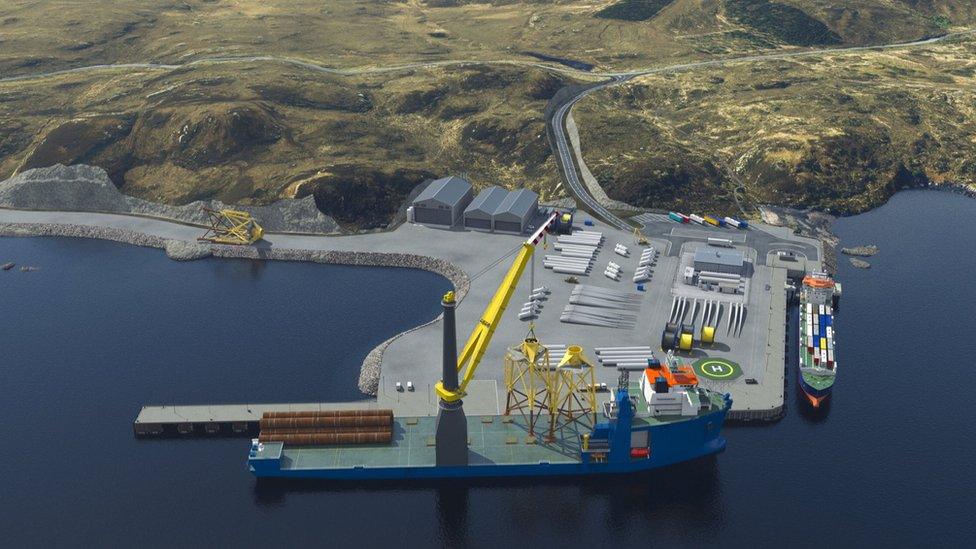Stornoway deep water port plan attracts £49m investment
- Published

An illustration of the proposed new port in the Western Isles
Plans for a deep water port in Stornoway in Lewis have attracted an investment package worth £49m.
Stornoway Port Authority said the facility was needed for the berthing of large cruise ships, container ships and to support the renewable energy sector.
The funding is made up of £10m from Highlands and islands Enterprise, £37.5m from the local council and £1.5m from the Stornoway Port Authority.
The Scottish government will provide more support if targets are met.
These include the port opening in May 2023.
Test holes for the new port were drilled three years ago and Stornoway Port Authority sought designs for the facility in 2018.
Construction work is expected to begin next year.
The deep water port would be able to accommodate cruise ships of up to 360m (1,181ft) in length and large cargo ships.
It would have a freight ferry berth, space for the loading and unloading of components for renewable energy projects, such as wind farms, and land which could be developed for use in decommissioning offshore structures.

Stornoway harbour cannot accommodate the size of ships the new port will be able to take
Rural Economy Secretary Fergus Ewing confirmed the investment package.
He said: "We want our island communities to thrive and this investment to create a deep water terminal at Stornoway will provide infrastructure to support a range of diverse industries and economic activities, ranging from cruises, to energy, to aquaculture and ferries, which will be a tremendous benefit to the Western Isles."
Murdo Murray, chairman of Stornoway Port Authority, said: "This significant investment is tremendous news for Stornoway, the Outer Hebrides and Scotland.
"We believe it will bring massive new revenue streams to the port, create new employment in the area for decades to come, and go a long way to helping Scotland reach its net-zero carbon emissions target by 2045."